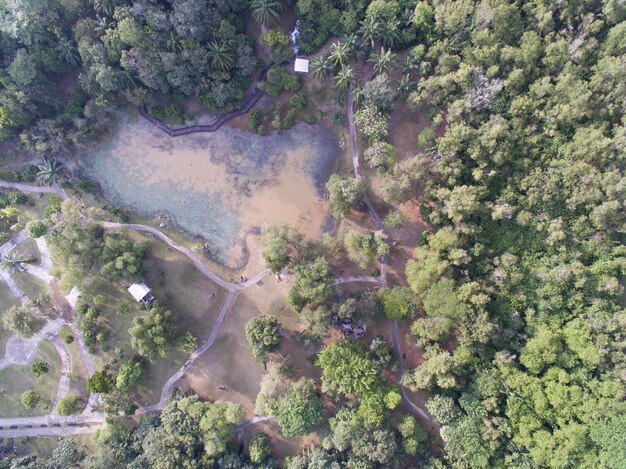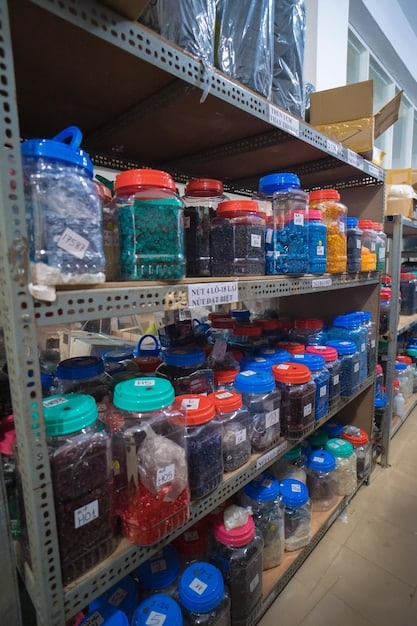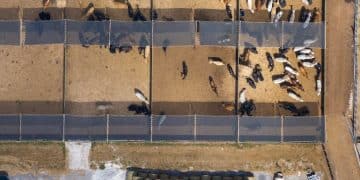Emergency Preparedness for Animal Shelters: Protecting Pets During Natural Disasters

Emergency preparedness for animal shelters is crucial for safeguarding pets during natural disasters by creating comprehensive plans, securing resources, training staff and volunteers, and establishing community partnerships to ensure the safety and well-being of animals in shelters across the US.
Natural disasters can strike unexpectedly, and animal shelters must be prepared to protect the vulnerable pets in their care. Emergency preparedness for animal shelters: Protecting pets during natural disasters in the US is a critical responsibility that requires careful planning, resource allocation, and community collaboration.
Understanding the Risks: Natural Disasters and Animal Shelters
Animal shelters in the US face a variety of risks from natural disasters, ranging from hurricanes and floods to wildfires and earthquakes. Understanding these risks is the first step in developing an effective emergency preparedness plan. Recognizing the specific threats in your region allows for targeted preparation and resource allocation.
Common Natural Disasters Affecting Animal Shelters
Several types of natural disasters can pose significant threats to animal shelters. It’s important to identify which are most likely to occur in your area.
- Hurricanes: Coastal shelters are particularly vulnerable to hurricanes, which can bring strong winds, heavy rain, and storm surges.
- Floods: Both coastal and inland shelters can be affected by flooding, which contaminates facilities and endangers animals.
- Wildfires: Shelters in dry, wooded areas face the risk of wildfires, which can spread quickly and require immediate evacuation.
- Earthquakes: Shelters in seismically active zones need to prepare for earthquakes, which can cause structural damage and displacement.
Assessing Vulnerability
Once you identify the types of disasters most likely to occur, assess your shelter’s vulnerability. This involves evaluating the shelter’s location, structural integrity, and emergency resources.

In conclusion, the first step in emergency preparedness for animal shelters involves understanding the risks posed by natural disasters and assessing the shelter’s vulnerability to these threats. This knowledge forms the basis for creating a well-informed and effective emergency plan.
Developing a Comprehensive Emergency Plan
A comprehensive emergency plan is the backbone of any successful disaster response strategy. This plan should outline specific procedures for various scenarios, ensuring that both staff and animals are protected. A well-structured plan minimizes confusion and maximizes efficiency during a crisis.
Key Components of an Emergency Plan
An effective emergency plan should include several critical elements to ensure a coordinated and efficient response during a disaster.
- Evacuation Procedures: Clear protocols for safely evacuating animals, including transportation plans, designated evacuation sites, and roles and responsibilities.
- Communication Protocols: Establish a communication system to keep staff, volunteers, and the community informed during a crisis.
- Resource Management: Inventory essential supplies and develop a plan for managing and replenishing resources.
- Training and Drills: Regularly train staff and volunteers on emergency procedures and conduct drills to test the effectiveness of the plan.
Evacuation Planning
Evacuation planning is a critical component of emergency preparedness. Identify evacuation routes, secure transportation options, and establish agreements with temporary shelter locations.
In summary, developing a comprehensive emergency plan involves identifying potential risks, outlining specific procedures, training staff, and establishing communication protocols. This proactive approach ensures that the animal shelter is well-prepared to protect its animals.
Securing Essential Resources and Supplies
Having access to essential resources and supplies is crucial for the emergency preparedness for animal shelters. Stockpiling necessary items and establishing supply chains ensures that the shelter can meet the immediate needs of the animals in its care during and after a disaster.
Essential Supplies Checklist
Creating a checklist of essential supplies is the first step in resource management. Ensure you have adequate quantities of the following items:
- Food and Water: Plenty of non-perishable food and potable water for all animals.
- Medical Supplies: First aid kits, medications, and veterinary supplies.
- Crates and Carriers: Sufficient crates and carriers for safe transport and temporary housing.
- Cleaning Supplies: Disinfectants, waste disposal bags, and cleaning equipment.
Establishing Supply Chains
Relying on a robust supply chain ensures continuous access to resources, especially after a disaster disrupts normal operations.

In conclusion, securing essential resources and supplies is a vital aspect of emergency preparedness for animal shelters. Maintaining a well-stocked inventory and establishing reliable supply chains ensures that the shelter can provide necessary care and support to animals during and after a disaster.
Training Staff and Volunteers for Emergencies
Well-trained staff and volunteers are essential for effective emergency response. Regular training sessions and drills ensure that everyone knows their roles and responsibilities, leading to a coordinated and efficient response during a disaster.
Importance of Regular Training
Regular training sessions are vital for ensuring that staff and volunteers are prepared to handle emergency situations calmly and effectively. Training should cover a range of topics, including:
- Evacuation Procedures: How to safely evacuate animals, handle carriers, and manage different animal behaviors.
- Basic First Aid: Providing immediate medical care to injured animals.
- Communication Protocols: Using communication systems and disseminating information.
Conducting Emergency Drills
Emergency drills are crucial for testing the effectiveness of the emergency plan and identifying areas for improvement.
In summary, training staff and volunteers is a critical component of emergency preparedness for animal shelters. Regular training sessions and emergency drills ensure that everyone is well-prepared to respond effectively during a disaster.
Establishing Community Partnerships
Building strong relationships with community organizations and local authorities is a crucial aspect of emergency preparedness for animal shelters. Collaboration ensures that the shelter has access to additional resources, support, and expertise during a disaster.
Working with Local Authorities
Coordinating with local authorities, such as emergency management agencies, police, and fire departments, is vital. These partnerships can provide access to critical resources and support during a crisis.
Establishing community partnerships is essential for emergency preparedness for animal shelters. Building these relationships ensures that the shelter has access to the necessary resources, support, and expertise needed to protect animals during a disaster.
Post-Disaster Recovery and Support
The post-disaster period is a critical phase that requires careful management and coordination. Shelters must focus on reuniting pets with their owners, providing ongoing care to displaced animals, and restoring normal operations.
Reuniting Pets with Owners
Reuniting pets with their owners is a top priority after a disaster. Implement systems for identifying and tracking animals, and use social media and local media to publicize found pets.
In conclusion, post-disaster recovery and support are critical components of emergency preparedness for animal shelters. Focusing on reuniting pets with owners, providing ongoing care, and restoring normal operations ensures a smooth transition back to normalcy.
| Key Point | Brief Description |
|---|---|
| ⚠️ Risk Assessment | Identify local disaster risks and assess shelter vulnerability. |
| plan | Create detailed evacuation and communication plans. |
| Resources | Stockpile food, water, medical supplies, and crates. |
| 🤝 Community | Partner with local authorities and organizations. |
FAQ
Emergency preparedness ensures animal shelters can protect pets during disasters, minimizing harm and facilitating swift recovery. It safeguards the animals and supports the community
Essential components include evacuation plans, communication protocols, resource management, and staff training. These ensure coordination and effective response during crises.
Shelters can stockpile essential items, like food and medical supplies, and establish supply chains. This guarantees access to resources during and after a disaster.
Community partnerships with local authorities and organizations enhance preparedness. They provide access to resources, support, and expertise during emergencies, thus increasing effectiveness.
Shelters reunite pets by implementing tracking systems and using social media to publicize found animals. This coordinated effort helps facilitate reunification efficiently post-disaster.
Conclusion
Emergency preparedness for animal shelters is more than a plan; it’s a commitment to protecting vulnerable animals during times of crisis. By understanding the risks, developing comprehensive plans, securing resources, training staff, and fostering community partnerships, animal shelters can ensure the safety and well-being of the pets in their care, even in the face of natural disasters. A proactive approach not only protects the animals but also strengthens the community’s resilience.





